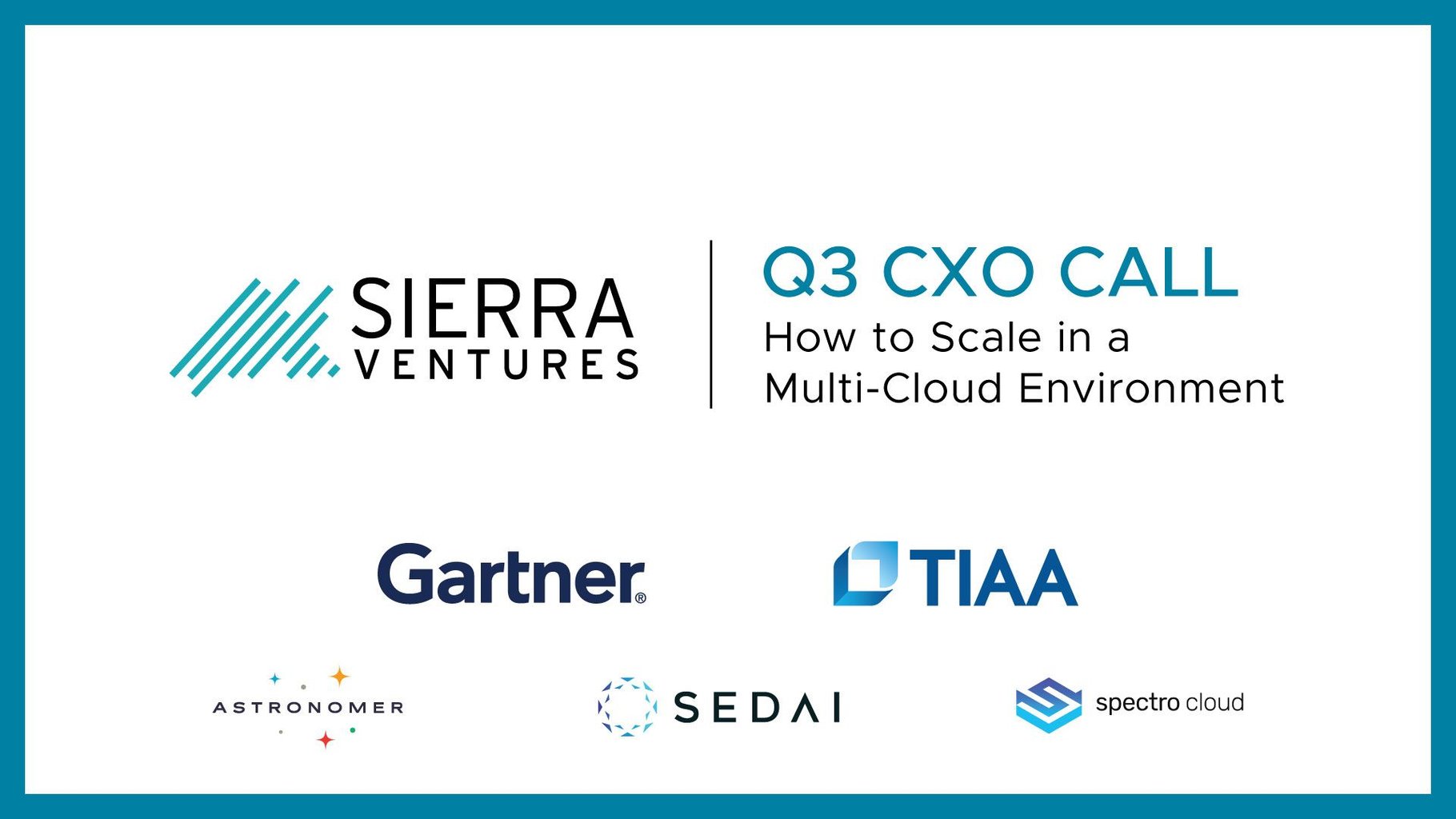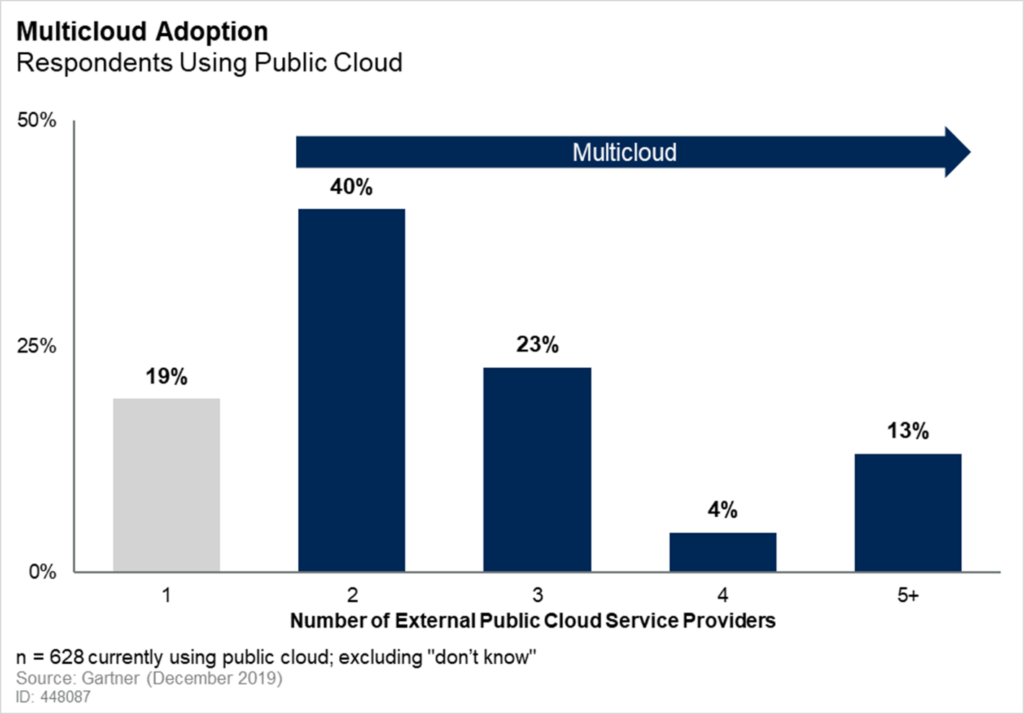Scaling in a Multi-Cloud Environment

Sierra Ventures hosted our Q3 CXO Advisory Board call on September 15th to discuss how organizations should manage the growth of their multi-cloud environments. The event was moderated by Sierra Ventures Managing Partner Tim Guleri and speakers included Ajit Naidu, EVP of Global Infrastructure at TIAA and Arun Chandrasekaran, Distinguished VP Analyst at Gartner. CEOs from three cloud-focused portfolio companies - Astronomer, Sedai, and Spectro Cloud - shared their perspectives with attending CXOs as well.

“You don’t choose multi-cloud, it chooses you”
According to a 2019 Gartner Survey, 81% of organizations were using more than one public cloud vendor at the time, with 40% using three or more public cloud vendors. Whether it’s for cost savings, increasing agility, or simply due to internal politics, technology CXOs are being pushed into the multi-cloud direction. With this shift, they need to know how to handle all of the multi-cloud intricacies to ensure the company is strategically aligned to each cloud provider’s capabilities and strengths/weaknesses.

Source: Gartner. 5 key takeaways from our panelists:
- Cost savings is one of the main reasons enterprises embrace the multi-cloud path, but ultimately, agility is the main driver of adoption. The ability to reduce vendor lock-in and always run best of breed platforms for specific cloud use cases will have a much greater long-term impact over cost savings. Insuring geographical coverage is also a common reason to consider multi-cloud.
- Multi-cloud is not easy and will not be a panacea for all cloud challenges. Both Arun and Ajit encouraged organizations to “walk before they run” on their initiatives. Before going “all-in”, CXOs should consider strategic elements like workload placement scenarios, organizational skills alignment, technology architecture planning, security posture, and portability mapping. They advised NOT to go down the multi-cloud route just because it’s the “shiny new thing”.
- The top 4 values related to agility within multi-cloud are:
- Workload Portability - use abstraction layer or non-native capabilities
- Data Portability - moving data costs lots of time and money, toughest of these 4 to realize
- Workflow Portability - provisioning, monitoring, log consolidation
- Traffic Portability - keep workloads and data close to usage, route traffic to closest data center
- Managing SaaS applications is becoming an important aspect of a multi-cloud strategy and is part of the public cloud adoption model. CXOs are concerned about their data when these applications are being leveraged, as it occurs outside the cloud perimeter. Make sure to consider as part of the overall multi-cloud discussion.
- Emerging Technologies that will play an important role in tackling multi-cloud are Containers/Kubernetes, Microservices, Zero Trust, and Open-Source Data Integration. We are seeing startups building focused multi-cloud capabilities in each of these spaces, which is their core business and can provide leverage against the larger vendors / public cloud providers’ product offerings.
We’re looking forward to seeing how multi-cloud continues to play out over the next few years. If you’d like to discuss any of these trends or new ones you’re seeing please get in touch at brendon@sierraventures.com.
